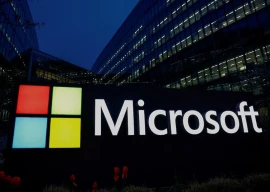
Mobile phone exports out of Vietnam have surged to over $60 billion. India’s mobile phone exports – $3 billion in 2019 – are targeted at $110 billion by 2025, creating thousands of jobs.
The Economic Times of India says, “Modi’s vow to create tens of millions of new jobs has stuttered on many fronts, but domestic smartphone production has emerged as a bright spot.” One reason that new countries in the region are becoming mobile phone exporters is the trend of moving manufacturing facilities out of China. This is partly due to rising labour costs in China and partly due to President Donald Trump’s escalation of tariffs on goods exported out of China.
Several factors going for us
Pakistan’s manpower cost is reportedly one-third of the Chinese and we are the seventh largest market of mobile phones.
In 2019, over 28.2 million mobile phones were imported legally into Pakistan – thanks to the full introduction of Device Identification, Registration and Blocking System (DIRBS) by Pakistan Telecommunication Authority (PTA) in early 2019, which helped to control smuggling. In addition, around 12 million sets were reportedly assembled in the country.
The demand for high-quality affordable internet-enabled devices is surging as internet is getting integrated into the lives of young tech-savvy individuals. Nearly 40% of the population has yet to cross the age of 15 and start looking for their own smartphones. Seventy-six million mobile broadband users in Pakistan today can easily double to 150 million by 2025.
This means domestic demand for at least over 75 million new smartphones alone. Add to this the low-cost feature phones. On top of all that come the replacement phones.
According to Counterpoint Research, on an average in this region, a mobile phone is replaced every 21 months. As for the existing local manufacturing facilities, so far PTA has given nearly 30 licences for the assembly/manufacture of mobile phones. Over a dozen are operational.
How do we export?
One common feature among the countries exporting mobile phones is that state policies provide full support to the manufacturers-cum-exporters. Therefore, the first thing needed is strong government support with an aggressive mobile phones manufacturing and export policy.
Second, it is a no-brainer that there must be difference between import taxes on completely built units (CBUs) and semi/completely knocked down (SKD/CKD) parts.
While this is the most popular export incentive, it is also the trickiest. The tricky part is that if import duties/taxes on CBUs are set high, the sets become unaffordable for many users – the same users who are providers and exporters of IT services – freelance as well as organised – in software development, business process outsourcing, call centres, transcription services, online tuitions (eg teaching Quran to kids abroad), etc.
Similarly, domestic IT-enabled services, like ride-sharing and mobile banking, depend on the availability of affordable smartphones. Therefore, the best way to create a reasonable differential in import duties is to make SKD/CKD parts duty/tax-free. Third, every investor, particularly foreign, looks for a rational and predictable taxation regime. Pakistan’s track record has been rather erratic. It is actually quite easy to give that comfort to foreign investors, by acceding to the World Trade Organisation (WTO)’s IT Agreement (ITA), like India, Vietnam, Indonesia and 79 other countries have done.
Even if we do not accede to the ITA for the time being, the government must ensure that the new export-oriented incentives are there to stay.
Export rebate
Fourth, somewhat controversial, is the export rebate. But there are two issues with that – export rebate is objected to by the proponents of free trade (read WTO) and where will the government bring all the cash from?
But since all our peers/competitors do it, we cannot do without it. In order to manage the two issues, the form and shape of the rebate has to be carefully tailoured, and should be subject to specific eligibility criterion.
Pakistan’s neighbours give the exporters, what they call, Duty Credit Scrip, which is simply a certificate with monetary value that can be used to pay taxes and other government dues. At present, their duty scrips are valued at 4% of the export value, but the industry is demanding 8%. In return, the manufacturers-cum-exporters have to show compliance with the local manufacturing guidelines and commit to targets of developing local supply chains and generating employment.
Bangladesh started offering 10% subsidy on exports of IT services and hardware (including mobile phones) in February 2018. In case of China and Vietnam, anecdotally the export rebates given are even higher.
A side benefit of offering such a rebate is that it incentivises exporters to declare full value and bring all their earnings to the country.
Interestingly, in Pakistan too, a 5% reward on the export of IT and IT-enabled services (not mobile phones) was introduced in 2017. However, its process was never finalised. Therefore, for mobile phones, an export rebate (or whatever we may like to call it), which is at least equal to Bangladesh’s 10%, would be in order.
Lastly, there are several other incentives that these countries offer to the manufacturers-cum-exporters, like value added tax (VAT) and income tax holiday for five years.
As per PWC’s “Vietnam Pocket Tax Book 2019”, two attractive preferential corporate income tax rates of 10% and 20% are available for 15 and 10 years respectively, for large-scale high-tech manufacturers there. In India, last September they also cut the corporate tax rate from 30% to 22%. Pakistan also offers some such incentives, but if we have to become a player in mobile phone manufacturing and export, we will have to “do more”.
Aggressive and quick
As per Pakistan Bureau of Statistics, mobile-phone imports reached half a billion dollars in the Jul-Nov period of 2019. At this pace, full-year imports are expected to be over $1.2 billion.
Promoting local manufacturing, together with exports, will start balancing that import bill. As we see in other countries, gradually the eco-system will develop, and locally produced parts – at first items like chargers and accessories – will start adding local value. Therefore, right from the word go, the mobile phones policy must aggressively target exports – not just the domestic market. We have no time to take the typical route of first meeting local demand, and then later on thinking about exports.
Not only that we are already late, others are running away with the opportunity ‘relocate out of China’. We must move aggressively - and fast.
The writer is former CEO of the Universal Service Fund and is providing ICT consultancy services in several countries of Africa and Asia
Published in The Express Tribune, March 9th, 2020.
Like Business on Facebook, follow @TribuneBiz on Twitter to stay informed and join in the conversation.


















1713893627-4/Shredded-10,000-yen-bill-(1)1713893627-4-270x192.webp)

1713889672-1/Plastic-waste-(2)1713889672-1-270x192.webp)



















COMMENTS
Comments are moderated and generally will be posted if they are on-topic and not abusive.
For more information, please see our Comments FAQ